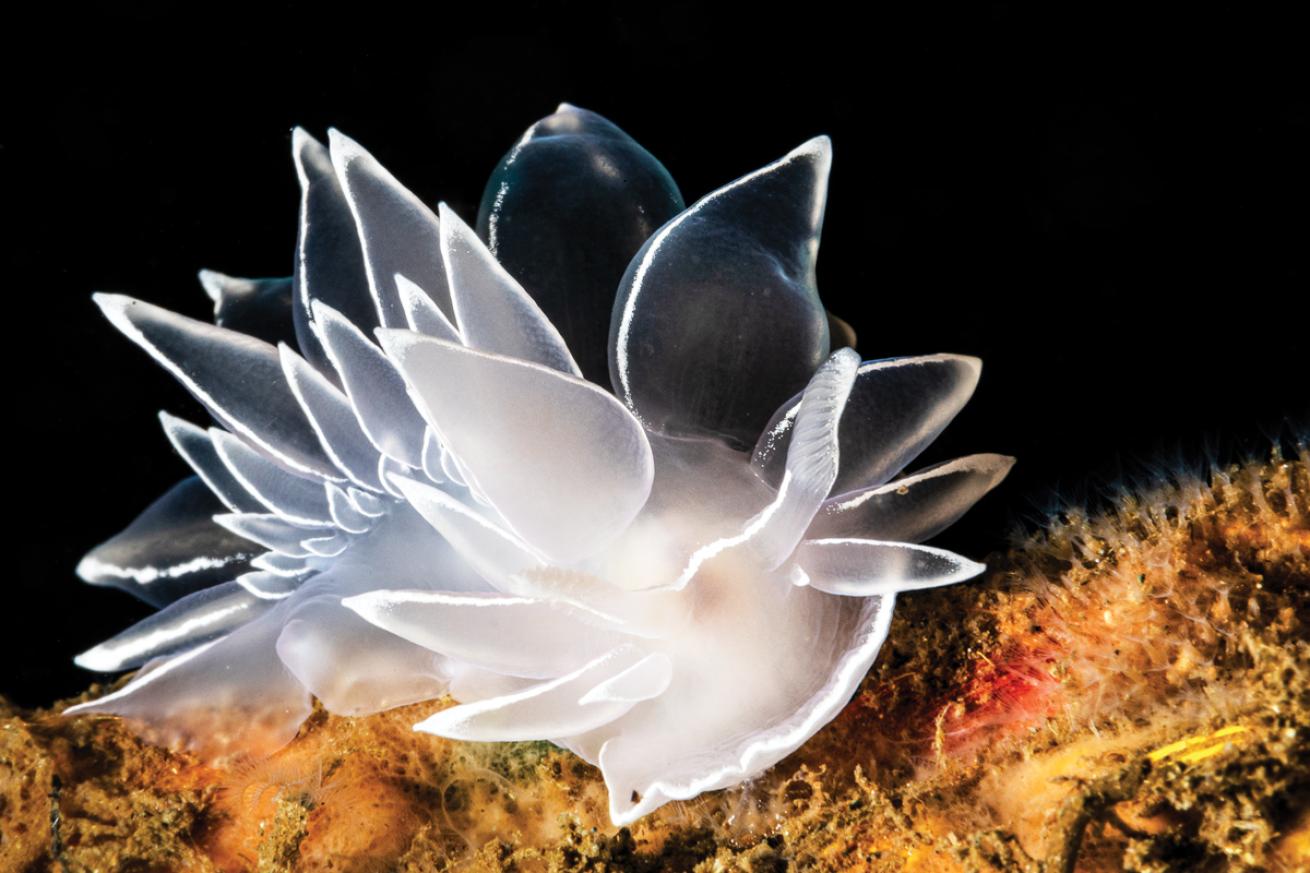How to Get Creative with Your Underwater Backlighting

Brent DurandBacklighting transparent creatures, such as this nudibranch, illuminates their features and gives them depth.
Light and shadow are two fundamental elements of photography. They guide the viewer’s eye through the scene, create contrast and provide depth that makes the image feel less two-dimensional.
There are many lighting techniques used in underwater photography. However, backlighting is a favorite among macro shooters. The effect can be created with a strobe, video light or any dive torch.
Backlighting is commonly used to illuminate subjects with transparent body areas, like a goby, nudibranch or squid. Certain subjects may even appear to glow. Photographers use two strobes or lights to illuminate the subject from either side. The light traveling through the transparent body will create the illumination effect. Because of this side angle of light, strobes/lights can remain on the strobe arms for easy positioning.
Backlight can also create contrast between a subject and the background, which is particularly useful when shooting subjects with intricate details. For this effect, the light source is placed behind the subject to create a strong halo around the subject—very similar to a hair light in studio photography. The light does not need to be extremely powerful. Smaller lights are easy to place on the sand, bare rock or other areas while carefully avoiding coral, sponges, algae or other marine life.
Snoots are another useful tool in backlighting since the diameter of the beam can be precisely controlled. Several manufacturers sell affordable lights with compatible snoots.
Backlighting is best used as a subtle technique, often in conjunction with soft lighting on the front of the image to bring out important details that might otherwise be left in shadow.










